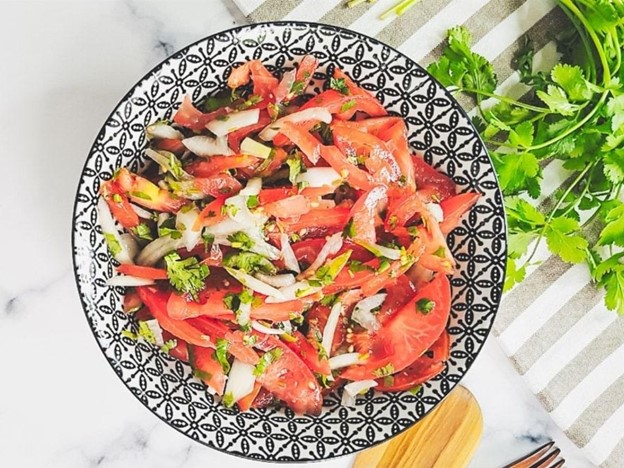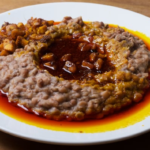When it comes to refreshing and vibrant salads, East African cuisine offers a delightful array of flavors. Among the diverse range of dishes, one stands out for its simplicity and taste: Kachumbari. This traditional tomato and onion salad originating from East Africa is known for its fresh ingredients, zesty flavors, and ability to complement a wide variety of meals. Join us as we explore the origins, ingredients, preparation, and cultural significance of this beloved East African dish.
Origins and Cultural Significance:
Kachumbari has deep roots in East African cuisine and is a staple in many countries, including Kenya, Tanzania, and Uganda. The name “Kachumbari” is believed to have Swahili origins, which is widely spoken across the region. It is often served alongside popular dishes such as grilled meats, pilau (spiced rice), and chapati (flatbread).
This salad holds cultural significance, often found at gatherings, celebrations, and family meals. Kachumbari’s fresh and tangy flavors not only enhance the overall dining experience but also provide a refreshing contrast to the richness of other traditional East African dishes.
Ingredients:
The beauty of Kachumbari lies in its simplicity and the use of readily available ingredients. The main components typically include:
- Tomatoes: Use ripe and juicy tomatoes for the best results. They provide a burst of flavor and a vibrant red color to the salad.
- Onions: Red or white onions can be used, depending on personal preference. They add a mild and slightly pungent taste.
- Fresh Lime or Lemon Juice: Citrus juice is essential to balance the flavors and provide a zesty kick.
- Fresh Cilantro or Parsley: These herbs contribute a distinct freshness to the salad and enhance its aroma.
- Green Chilies (optional): For those who enjoy a spicy kick, finely chopped green chilies can be added to the mix.
- Salt and Pepper: These common seasonings help bring out the flavors of the ingredients.
Preparation:
Preparing Kachumbari is straightforward and requires minimal effort. Here’s a step-by-step guide:
- Wash the tomatoes and onions thoroughly. Dice the tomatoes into small pieces and finely chop the onions. Place them in a bowl.
- If using green chilies, remove the seeds and finely chop them. Add them to the bowl.
- Squeeze fresh lime or lemon juice over the tomato and onion mixture.
- Finely chop the cilantro or parsley and add it to the bowl.
- Season with salt and pepper to taste.
- Gently toss the ingredients together until well combined.
- Allow the salad to marinate for about 15 minutes to let the flavors meld together.
- Serve chilled as a side dish or accompaniment to your favorite East African meal.
Serving Suggestions:
Kachumbari’s versatility allows it to pair well with various dishes. Here are a few serving suggestions:
- Grilled Meats: Kachumbari complements grilled meats like nyama choma (barbecued meat) or suya (spiced skewered meat).
- Pilau: Enjoy a bowl of aromatic spiced rice alongside the freshness of Kachumbari.
- Chapati: Wrap a piece of this East African flatbread around Kachumbari for a flavorful snack or light meal.
- Samosas: Use Kachumbari as a condiment or dip for savory samosas.
- Rice and Beans: Add a refreshing element to a comforting plate of rice and beans.
East African Kachumbari is a beloved salad that embodies the vibrant flavors of the region. With its simple yet refreshing combination of tomatoes, onions, lime or lemon juice, and fresh herbs, it has become an essential part of East African cuisine. Whether served alongside grilled meats, rice dishes, or flatbreads, Kachumbari adds a zesty and tangy twist to any meal. So, the next time you’re looking for a light and flavorful salad, give Kachumbari a try and experience the vibrant tastes of East Africa.








